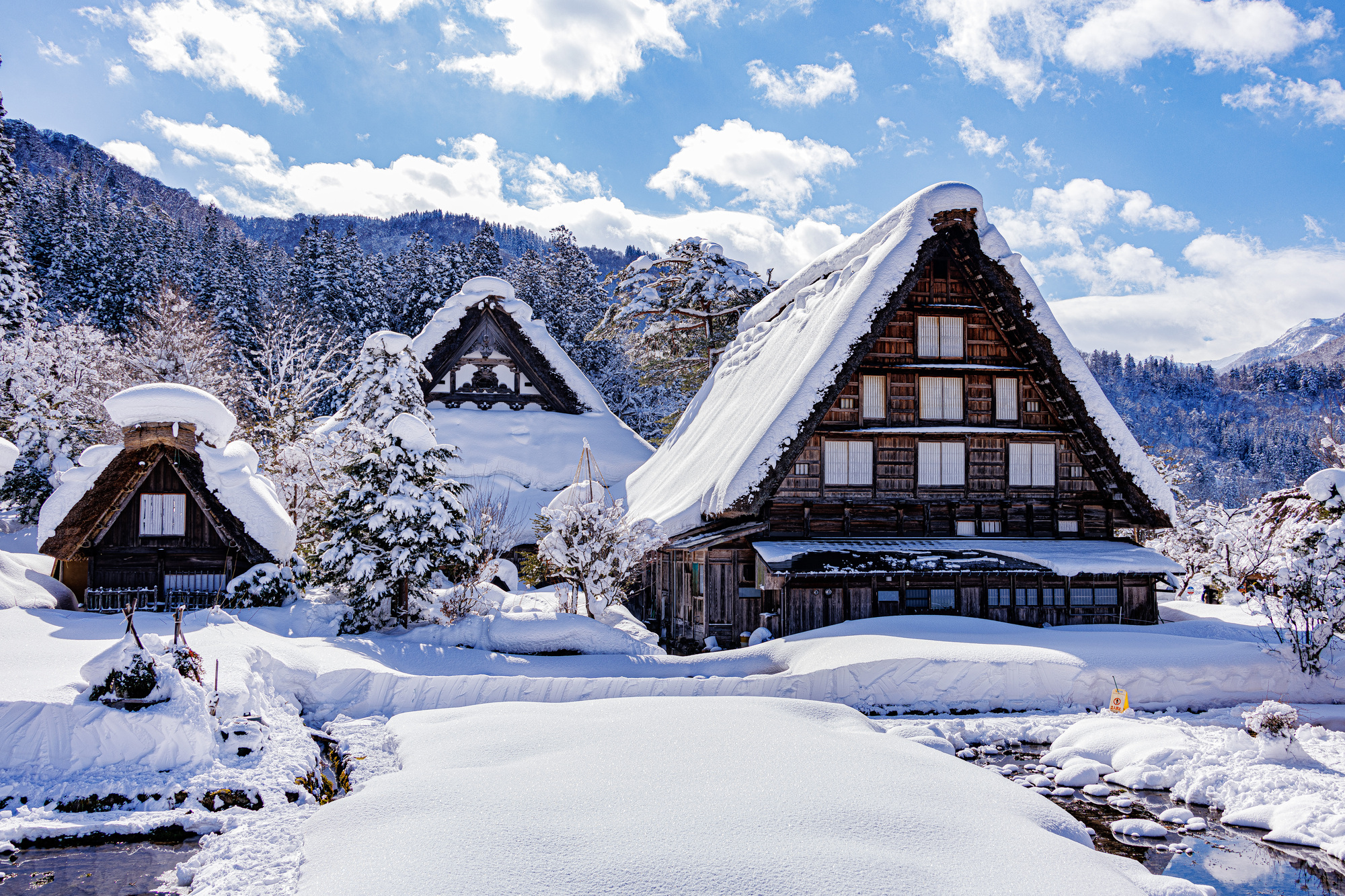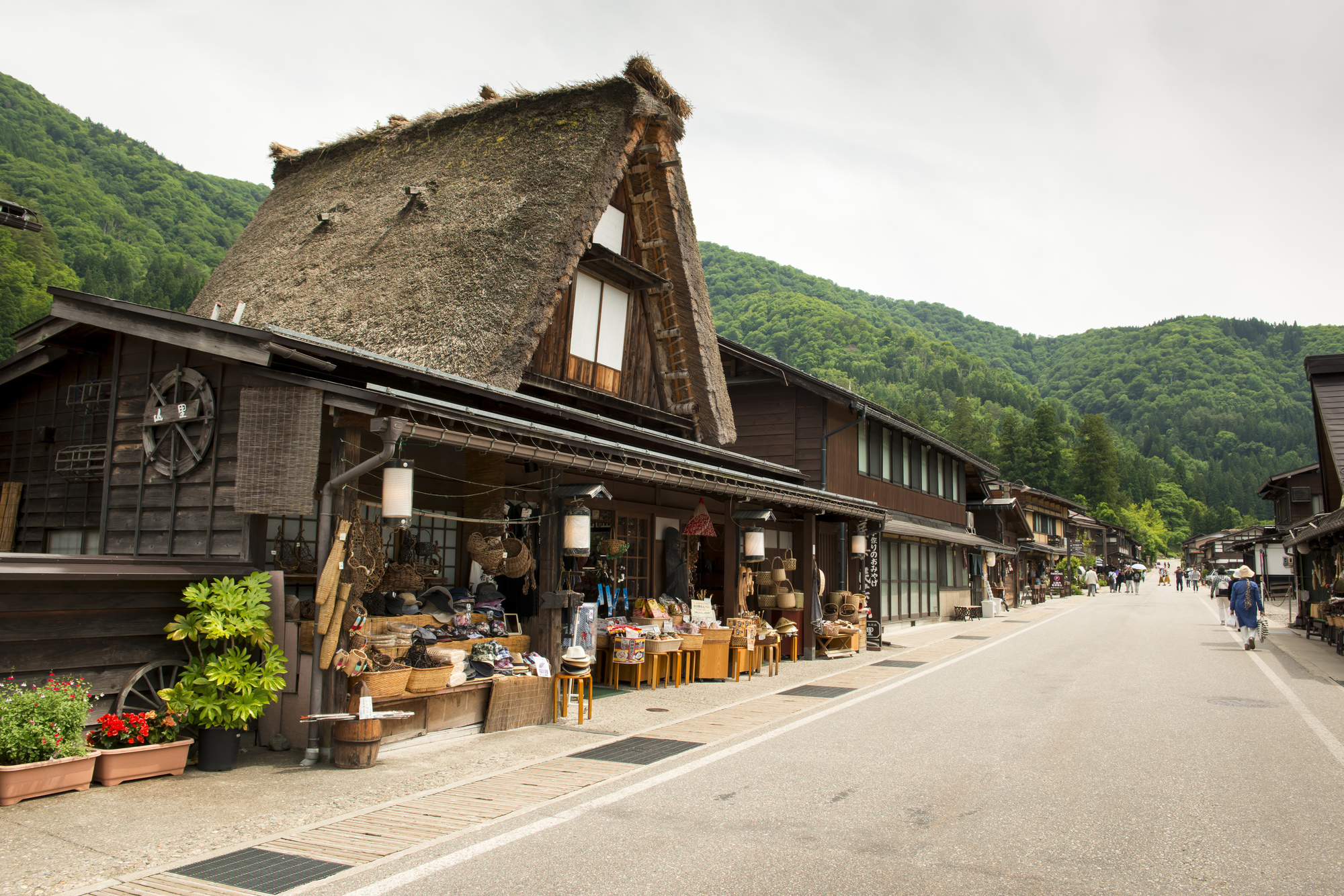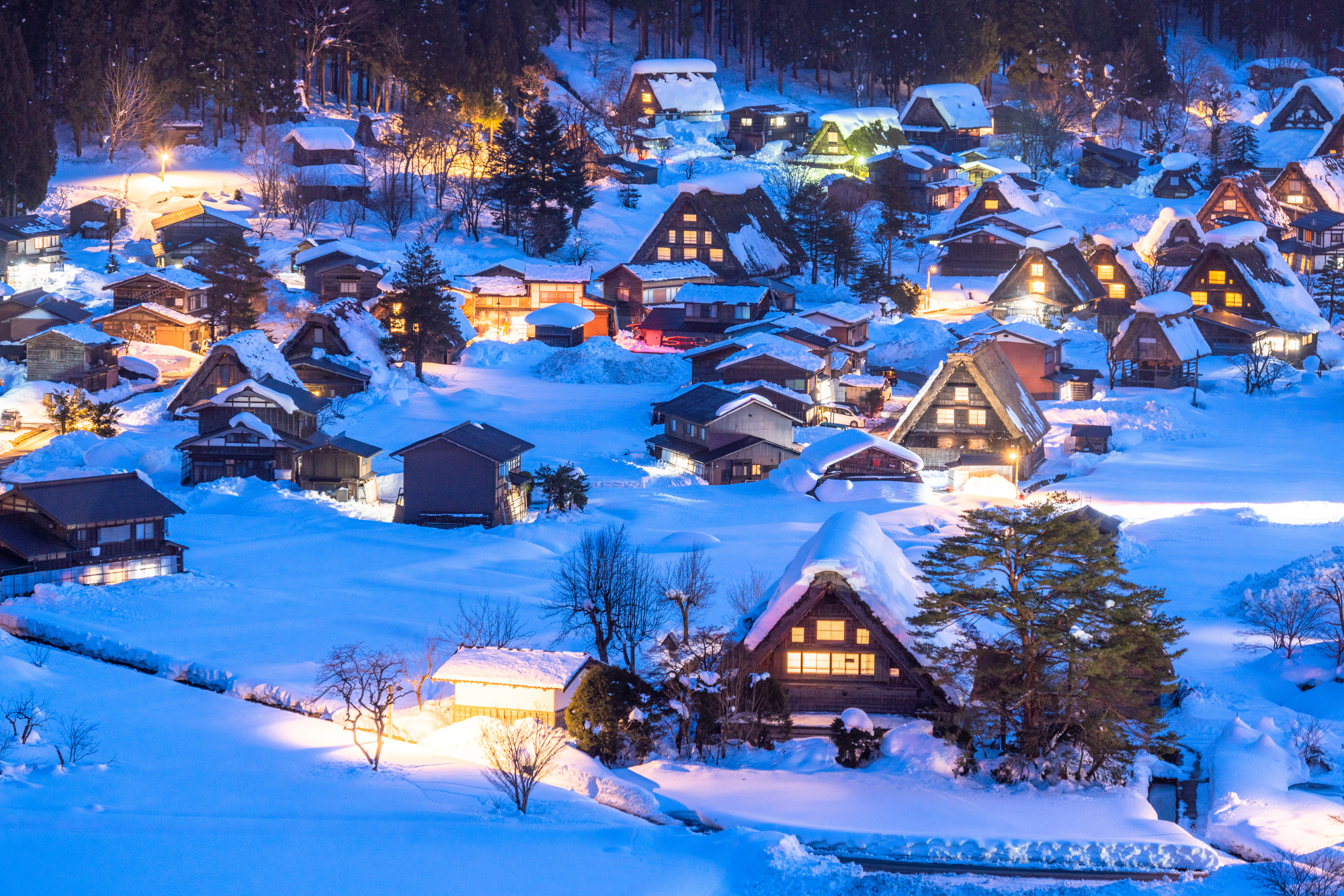Shirakawago Complete Guide
Etiquette and the Spirit of "Yui" in Japan's
Traditional Landscape
Table of Contents
Welcome to Japan's Quintessential Scenery. Shirakawago is a "Living Heritage."

In the silence of deep snow, thatched-roof houses emit a warm glow. This landscape, as if stepping into an old storybook, may be the very image of "Japan's quintessential scenery" that many people imagine. Welcome to the World Heritage site, the Gassho-zukuri village of Shirakawago.
However, before you begin this journey, there is one crucial thing to remember: "Shirakawago is, before being a tourist destination, a 'living village' where people carry on their daily lives." The paths we will walk are the daily routes of the residents, and within the houses we admire, there are the warm lives of families.
This guide is not only for you to enjoy this exceptionally beautiful scenery but also to learn how to behave as a visitor to a quiet village, paying respect to the history and spirit of the people who have sustained its beauty. The promises introduced here are not strict regulations. They are the small, yet most important, "considerations" that we travelers can offer to preserve this "living heritage" for eternity.
Now, before you click the shutter, let's first prepare to enter the gates of this village with a humble heart. A journey to truly experience Shirakawago begins here.
1.Why This Shape? The Story Woven by Gassho-zukuri and the Spirit of "Yui"
Why were these unique houses with triangular roofs born in this land? Their shape embodies the wisdom and prayers of people who fought against a harsh nature and supported their families' lives.
1-1. Wisdom for Living with Heavy Snow: The Secrets Hidden in the Gassho-zukuri Roofs
Shirakawago is one of the world's snowiest regions. In winter, the snow can sometimes exceed two meters in depth. The steep, thatched roofs of the Gassho-zukuri style are a brilliant product of wisdom, designed to let the heavy snow slide off naturally and prevent the houses from collapsing under its weight. The timber, assembled without a single nail, flexibly absorbs forces, creating a structure resistant to heavy snow and earthquakes. The large triangular roofs are designed to efficiently capture sunlight, which is why many houses are built with their roofs facing east or west.
1-2. The Industry that Supported Families: Sericulture in the Attics and Japan's Modernization
The spacious attics of Gassho-zukuri houses were not just for storage. They were vital workspaces for "sericulture," the region's former main industry of raising silkworms to produce raw silk. The attics were well-ventilated and relatively warm in winter due to the heat from the "irori" (sunken hearth) below, making them suitable for raising silkworms. The raw silk produced here became a valuable export that supported Japan's modernization, a testament to how this deep mountain village was connected to the global economy.
1-3. The Bond of Hearts Protects the Village: "Yui," an Intangible Cultural Heritage
The enormous thatched roofs of Gassho-zukuri houses need to be re-thatched once every 20 to 30 years. This task is impossible for a single household to complete. Thus, a system of mutual help called "Yui" was born, where the entire village comes together to assist, and it continues to this day. The sight of several hundred people finishing the re-thatching of a roof in a single day is breathtaking. This spirit of "Yui" is the most important, invisible cultural heritage that has maintained not only the individual houses but the beautiful landscape and community of the entire village.
1-4. [2025 Update] Challenges and Future for a Sustainable World Heritage Site
Since its registration as a World Cultural Heritage site in 1995, Shirakawago has welcomed many tourists. On the other hand, it faces challenges such as balancing tourism with residents' lives, a shortage of successors, and maintaining the landscape. Currently, the village is actively implementing measures such as a reservation system to control the number of tourists (especially during the winter light-up), strict building rules for landscape preservation, and activities to pass on the spirit of "Yui" to the next generation.
2.Preparations & Basic Info: How to Pay Respect to a Quiet Village
A visit to a World Heritage site calls for a special mindset.
2-1. Complete Access Guide from Nagoya, Kanazawa, and Takayama
- From Takayama: About 50 minutes from the Takayama Nohi Bus Center. This is the most popular route with frequent services.
- From Kanazawa: About 1 hour and 25 minutes from Kanazawa Station. Convenient for connecting from the Hokuriku Shinkansen.
- From Nagoya: About 2 hours and 50 minutes from the Meitetsu Bus Center.
- Note: Most buses require advance reservations. It is advisable to book early, especially during peak tourist seasons and on weekends. If visiting by private car, you cannot drive into the village and must park at a designated paid parking lot and use a shuttle bus.
2-2. How to Walk Around the Village: Observatory, Main Gassho Houses, and Strolling Tips
- Ogimachi Castle Ruin Observatory: The perfect location to overlook the entire village. The scenery often seen in posters is photographed from here. A paid shuttle bus departs from in front of the Wada House in the village.
- Gassho-zukuri Houses Open to the Public: The "Wada House," "Kanda House," and "Nagase House" are open to the public for a fee, allowing you to see the lifestyle of the past and the structure of Gassho-zukuri up close.
- Strolling Tips: First, get an overall view from the observatory. Then, try stepping off the main street onto a side path. Walking away from the tourist hustle and bustle, listening to the murmuring of waterways and the sound of the wind, you can feel the original tranquility of the village.
2-3. Winter Clothing and Precautions: Enjoying the Snowy Village Safely
3. [Crucial] The Spirit of "Ojama-shimasu" (Pardon the Intrusion): 6 Promises to Keep in Shirakawago
This chapter is the most important for your visit to Shirakawago. These promises will make your journey deeper and more meaningful.
3-1. This is a Living Space: Do Not Trespass on Private Property
Except for the paths and houses open to tourists, everything else is the private property of the residents. Never step into rice paddies, fields, or onto the doorsteps and gardens of houses, even for taking photos. It is the same as a stranger walking into your own garden without permission. Cultural Context: The consciousness of "Uchi" (inside) and "Soto" (outside). In Japan, there is a culture of clearly distinguishing between "Uchi," one's own territory, and "Soto," everything else. A family's property is a sacred "Uchi" space. Crossing that boundary without permission is considered extremely rude. |
3-2. Behind the Windows, There is Life: Consideration for Houses and Photography Manners
Peeking into the windows of Gassho-zukuri houses, or taking and posting photos on social media where residents' faces are clearly identifiable without their consent, is an invasion of privacy. The residents are not exhibits. If you wish to photograph a person, always ask for permission first by saying, "Shashin wo totte mo ii desu ka?" (May I take a picture?). Cultural Context: Respect for privacy and the culture of "sassuru" (to sense). Japanese people tend to hesitate to say "please stop" directly. It is considered a virtue to "sense" the other person's feelings. It is the behavior of a mature traveler to anticipate the residents' feelings and refrain from actions that might be a nuisance. |
3-3. Tranquility is a Treasure: Do Not Speak Loudly and Listen to the Village Sounds
One of the charms of this village is its tranquility, which is absent in cities. Loud conversations and noise disrupt this calm atmosphere and the peaceful lives of the residents. Special consideration is needed in the early morning and after sunset when there are fewer tourists. Cultural Context: The value of a peaceful daily life in rural communities. In rural Japanese communities, the calm and uneventful daily life itself is cherished. Travelers visit seeking the "extraordinary," but for residents, it is the stage of their "ordinary" life. Respecting that daily life is the minimum manner for a visitor. |
3-4. Beware of Fire: Protecting Wooden Houses as a Community and a Strict No-Fire Policy
Gassho-zukuri houses are made of flammable materials like thatch and wood. Maximum caution is required when handling fire, such as smoking while walking or littering cigarette butts. Never smoke outside of designated areas. Fire is the greatest threat that can destroy this precious heritage in an instant. Cultural Context: Community consciousness for preserving historical buildings. In Shirakawago, regular fire drills are conducted village-wide, and each resident has a strong sense of "protecting our own heritage by ourselves." Being careful with fire is a responsibility that travelers should fulfill as a member of that community. |
3-5. For a Beautiful Landscape into the Future: The Responsibility of "Pack-in, Pack-out"

Trash cans in the village are limited. To maintain the beautiful scenery, please be sure to take your own trash home with you. It's a small thing, but the cooperation of every visitor supports the beauty of this village. Cultural Context: The Japanese virtue of keeping public spaces clean. Just as shrines and temples are always kept clean, the Japanese consider it a virtue to maintain the cleanliness of public spaces. The act of taking your trash home is an expression of gratitude and respect for this beautiful village. |
3-6. Consideration for Views from Above: Strict Rules on Drone Flights
Flying drones without permission within the Shirakawago village is generally prohibited due to the risk of accidents from falling, damage to cultural properties, and invasion of residents' privacy. Never fly a drone without special permission. Cultural Context: The Japanese stance of prioritizing safety and privacy. In Japan, even when utilizing new technologies, safety and individual privacy are given the highest priority. The regulation of drones reflects this mindset. |
4-1. A Must-See View: The Panoramic View from the Ogimachi Castle Ruin Observatory
While strolling through the village is wonderful, first, try to view the entire landscape of scattered, miniature-like Gassho-zukuri houses from the observatory. The appearance of the village, which shows completely different expressions each season, is truly a spectacular view. During the winter light-up period, access to this observatory is by reservation only, so checking in advance is essential.
4-2. Savoring Local Flavors: Hoba Miso, Gohei-mochi, and Hida Beef

4-3. Staying in a Gassho-zukuri House: A Special Experience and What to Know
There are several guesthouses (minshuku) in the village where you can actually stay in a Gassho-zukuri house. Chatting with the host and other guests around the irori hearth and experiencing the village night wrapped in silence will become a cherished memory. However, a minshuku is not a hotel. As they are old wooden houses, baths and toilets are often shared, and they are not very soundproof. Stay with the feeling of being a guest in a resident's home, and be mindful of your manners.
5.Planning Your Trip: Model Itineraries for a Deeper Understanding of a World Heritage Site
5-1. [Day Trip] Visiting from Takayama! Shirakawago Highlight Course
![5-1. [Day Trip] Visiting from Takayama! Shirakawa-go Highlight Course](/library/689c2e896e58203ab69c5bd3/68c1018dd8a63f3438aac8d3.jpg)
- Morning: Take a bus from Takayama Nohi Bus Center to Shirakawago.
- Upon Arrival: First, go to the observatory to capture the panoramic view of the village.
- Noon: Descend into the village and have lunch with local cuisine.
- Afternoon: Visit a public house like the Wada House to learn about the internal structure of Gassho-zukuri. Then, freely stroll through the village.
- Evening: Return to Takayama by bus.
5-2. [1 Night, 2 Days] Staying in a Gassho-zukuri House! The Ultimate Course to Experience the Silent Night and Morning
- Day 1:
〇 Afternoon: Arrive in Shirakawago. Check into a Gassho-zukuri guesthouse.
〇 Evening: Take a slow walk through the village as the number of tourists decreases.
〇 Night: Enjoy a warm dinner around the irori hearth at the guesthouse. Enjoy the fantastic night view of the illuminated village.
- Day 2:
〇 Early Morning: Wake up before anyone else and take a walk in the quiet village enveloped in morning mist. This is the privilege of overnight guests.
〇 Morning: Have breakfast at the guesthouse.
〇 Forenoon: Visit places you missed the day before and look for souvenirs.
〇 Around Noon: Take a bus to your next destination.
The True Meaning of "Yui" to Take Home with You

When you finish your journey in Shirakawago, you will have many beautiful photos in your camera. However, there is something more that I hope you will keep in your heart. It is the spirit of "Yui," where people have protected this landscape and culture by huddling together and helping each other in this harsh nature.
As visitors, our adherence to the village rules and our consideration for the residents' lives might be a new form of "Yui" in which we, living in the modern age, can participate. Your quiet respect and gentle consideration will become a vital force connecting this "living heritage" to the future, 100 or 200 years from now.

